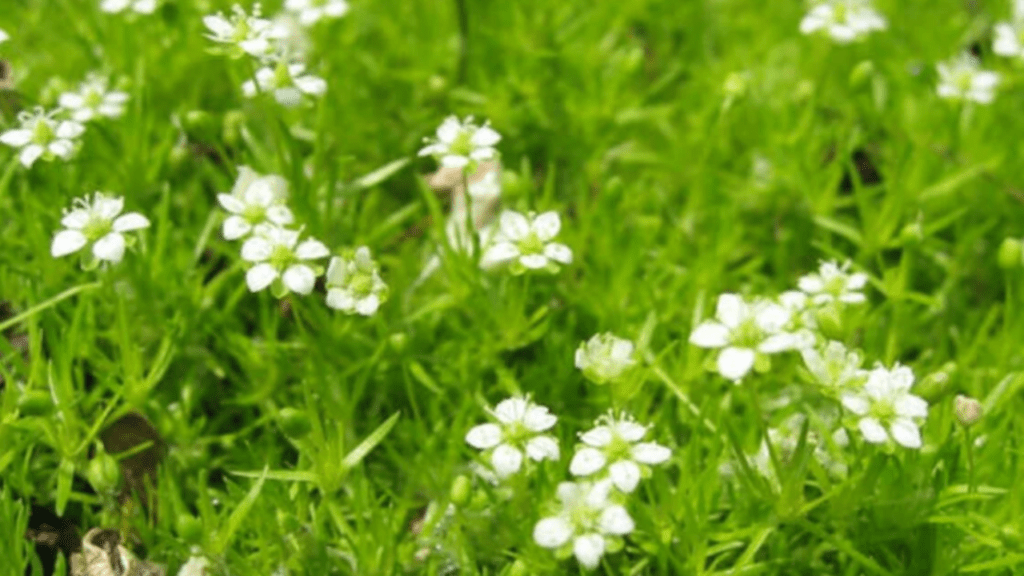
Easy Steps to Grow and Care for Irish Moss Ground Cover
If you’re looking to add some lush greenery to your garden or landscaping, Irish Moss ground cover is a great option. Not only does it provide a beautiful, vibrant green carpet-like appearance, but it also requires minimal maintenance once established. In this article, we’ll walk you through the easy steps to grow and care for Irish Moss ground cover, including tips for maintaining its health and appearance. Whether you’re a seasoned gardener or just starting out, you’ll find everything you need to know right here. Let’s get started!
Table of Contents
ToggleWhat is Irish Moss Ground Cover?
Detailed description of Irish moss (Sagina subulata).
Irish Moss, also known as Sagina subulata, is a low-growing perennial ground cover that is native to Europe. It is characterized by its dense, moss-like appearance and vibrant green color. The foliage is made up of small, needle-like leaves that form a thick carpet across the ground. In the spring and early summer, Irish Moss produces tiny white flowers that add a delicate and charming touch to any garden or landscape.
The plant prefers moist, well-drained soil and partial to full sun exposure. It is also tolerant of light foot traffic, making it an ideal choice for areas with moderate to heavy use. Irish Moss is a versatile plant that can be used in rock gardens, between stepping stones, or as a border along walkways and garden beds.
To grow and care for Irish Moss, it is important to provide regular watering, especially during dry periods, and to avoid overwatering, which can lead to root rot. It is also important to monitor for any signs of pests or disease and to address any issues promptly to maintain the health and appearance of the plant.
Overall, Irish Moss is a beautiful and low-maintenance ground cover option that adds visual interest and texture to any outdoor space. By following these easy steps for growth and care, you can enjoy the beauty of Irish Moss in your garden for years to come.
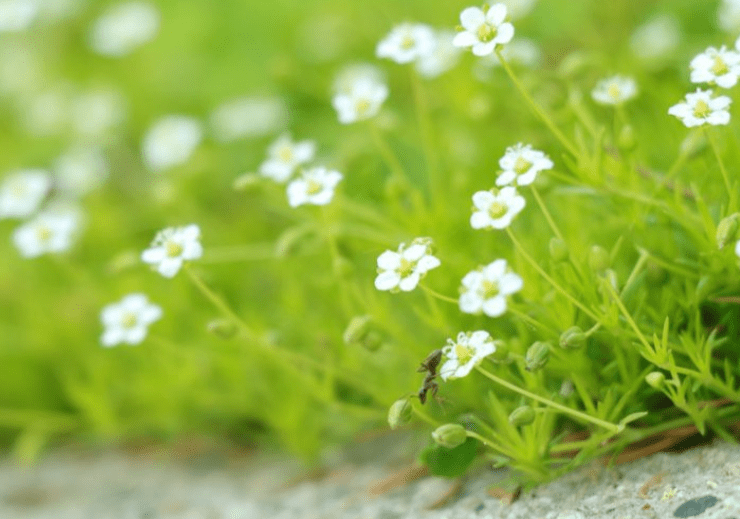
Origins and natural habitat.
Irish Moss, also known as Sagina subulata, is a low-growing, creeping perennial plant that is native to Europe and North Africa. It is commonly found in rocky or sandy coastal areas and is often used as a ground cover in gardens and landscapes. Irish Moss prefers moist, well-drained soil and thrives in partial to full sun exposure. It is also tolerant of light foot traffic, making it an ideal choice for areas with moderate to heavy use.
This versatile plant can be used in rock gardens, between stepping stones, or as a border along walkways and garden beds. To grow and care for Irish Moss, it is important to provide regular watering, especially during dry periods, while also avoiding overwatering, which can lead to root rot. It is also important to monitor for any signs of pests or disease and to address any issues promptly to maintain the health and appearance of the plant.
Overall, Irish Moss is a beautiful and low-maintenance ground cover option that adds visual interest and texture to any outdoor space. By following these easy steps for growth and care, you can enjoy the beauty of Irish Moss in your garden for years to come. Its origins and natural habitat make it a resilient and attractive addition to any landscape.
Comparison with other types of moss and ground covers.
Irish Moss is a unique and versatile ground cover that has many benefits compared to other types of moss and ground covers. While some types of moss may not tolerate foot traffic well, Irish Moss is able to withstand light foot traffic, making it a great option for areas with moderate to heavy use. It can be used in rock gardens, between stepping stones, or as a border along walkways and garden beds, adding visual interest and texture to the outdoor space. In comparison to other ground covers, Irish Moss is low-maintenance and requires regular watering, especially during dry periods, while also being resistant to overwatering, which can lead to root rot. Additionally, it is important to monitor for pests and disease and address any issues promptly to maintain the health and appearance of the plant. Overall, Irish Moss is a resilient and attractive ground cover that can thrive in various outdoor environments, making it a great choice for gardeners looking for a beautiful and low-maintenance option.
Visual characteristics and aesthetic appeal.
Irish Moss is a unique and versatile ground cover that has many benefits compared to other types of moss and ground covers. While some types of moss may not tolerate foot traffic well, Irish Moss is able to withstand light foot traffic, making it a great option for areas with moderate to heavy use. It can be used in rock gardens, between stepping stones, or as a border along walkways and garden beds, adding visual interest and texture to the outdoor space.
In comparison to other ground covers, Irish Moss is low-maintenance and requires regular watering, especially during dry periods, while also being resistant to overwatering, which can lead to root rot. Additionally, it is important to monitor for pests and disease and address any issues promptly to maintain the health and appearance of the plant.
Overall, Irish Moss is a resilient and attractive ground cover that can thrive in various outdoor environments, making it a great choice for gardeners looking for a beautiful and low-maintenance option. Its visual characteristics and aesthetic appeal make it a popular choice for landscaping and gardening projects.
Benefits of Using Irish Moss Ground Cover
Low maintenance requirements.
Irish Moss is a unique and versatile ground cover that has many benefits compared to other types of moss and ground covers. While some types of moss may not tolerate foot traffic well, Irish Moss is able to withstand light foot traffic, making it a great option for areas with moderate to heavy use. It can be used in rock gardens, between stepping stones, or as a border along walkways and garden beds, adding visual interest and texture to the outdoor space. In comparison to other ground covers, Irish Moss is low-maintenance and requires regular watering, especially during dry periods, while also being resistant to overwatering, which can lead to root rot. Additionally, it is important to monitor for pests and disease and address any issues promptly to maintain the health and appearance of the plant. Overall, Irish Moss is a resilient and attractive ground cover that can thrive in various outdoor environments, making it a great choice for gardeners looking for a beautiful and low-maintenance option. Its visual characteristics and aesthetic appeal make it a popular choice for landscaping and gardening projects.
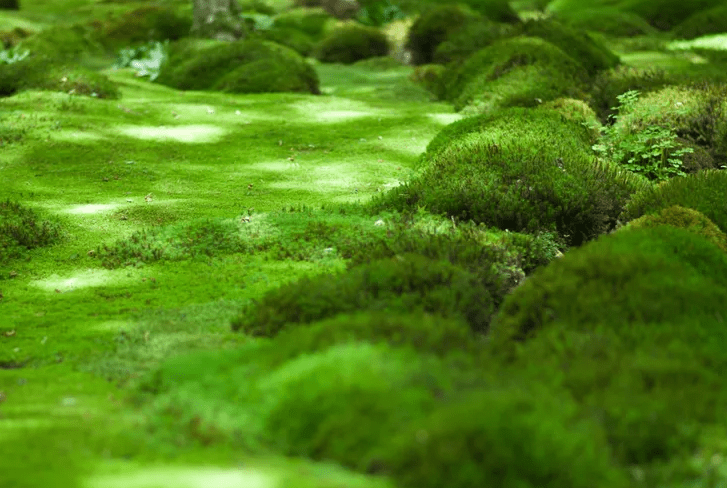
Year-round greenery and beauty.
Irish Moss is a fantastic ground cover choice that offers year-round greenery and beauty to your outdoor space. It is versatile and can withstand light foot traffic, making it a great option for areas with moderate to heavy use. You can use it in rock gardens, between stepping stones, or as a border along walkways and garden beds to add visual interest and texture to your outdoor space. Compared to other ground covers, Irish Moss is low-maintenance and requires regular watering, especially during dry periods, while also being resistant to overwatering, which can lead to root rot. It is important to monitor for pests and disease and address any issues promptly to maintain the health and appearance of the plant. Overall, Irish Moss is a resilient and attractive ground cover that can thrive in various outdoor environments, making it a great choice for gardeners looking for a beautiful and low-maintenance option. Its year-round greenery and beauty make it a popular choice for landscaping and gardening projects.
Erosion control and soil health improvement.
Irish Moss is an excellent choice for erosion control and improving soil health. Its dense growth pattern and root system help to stabilize the soil and prevent erosion, making it a great option for sloped or hilly areas. Additionally, Irish Moss can help to improve soil health by adding organic matter to the soil as it grows and spreads. This can help to improve soil structure, water retention, and nutrient availability, creating a healthier growing environment for other plants in the area. By using Irish Moss as a ground cover, gardeners can not only create a visually appealing landscape but also contribute to the overall health and stability of their outdoor space. Overall, Irish Moss is a versatile and beneficial plant for both aesthetic and practical purposes.
Drought tolerance and water conservation.
Irish Moss is an excellent choice for erosion control and improving soil health. Its dense growth pattern and root system help to stabilize the soil and prevent erosion, making it a great option for sloped or hilly areas. Additionally, Irish Moss can help to improve soil health by adding organic matter to the soil as it grows and spreads. This can help to improve soil structure, water retention, and nutrient availability, creating a healthier growing environment for other plants in the area. By using Irish Moss as a ground cover, gardeners can not only create a visually appealing landscape but also contribute to the overall health and stability of their outdoor space. Overall, Irish Moss is a versatile and beneficial plant for both aesthetic and practical purposes. When it comes to drought tolerance and water conservation, Irish Moss is a great option. It is able to withstand periods of dryness and requires minimal watering once established, making it an ideal choice for water-conscious gardeners. Additionally, its ability to reduce erosion can help to conserve water by preventing soil runoff and retaining moisture in the soil. By incorporating Irish Moss into landscaping and gardening practices, individuals can contribute to water conservation efforts and create sustainable outdoor spaces.
Eco-friendliness and biodiversity support.
Irish Moss is a great plant to incorporate into landscaping and gardening practices for its eco-friendliness and biodiversity support. This plant can help to improve soil structure, water retention, and nutrient availability, creating a healthier growing environment for other plants in the area. By using Irish Moss as a ground cover, gardeners can not only create a visually appealing landscape but also contribute to the overall health and stability of their outdoor space. Irish Moss is also drought-tolerant and requires minimal watering once established, making it an ideal choice for water-conscious gardeners. Additionally, its ability to reduce erosion can help to conserve water by preventing soil runoff and retaining moisture in the soil. Overall, Irish Moss is a versatile and beneficial plant for both aesthetic and practical purposes, supporting eco-friendliness and biodiversity in outdoor spaces.
How to Plant Irish Moss Ground Cover
Choosing the right location: sunlight, soil type, and drainage.
When choosing a location for planting Irish Moss, it is important to consider factors such as sunlight, soil type, and drainage. Irish Moss thrives in areas that receive partial to full sun, so be sure to select a location that provides adequate sunlight for the plant to grow and spread. Additionally, Irish Moss prefers well-draining, sandy or loamy soil, so it is important to choose a location with soil that allows for proper drainage to prevent waterlogging and root rot. Consider the natural topography of the area and choose a spot with good natural drainage to ensure the health and longevity of the Irish Moss. By taking these factors into consideration, you can create an ideal environment for Irish Moss to thrive and contribute to the overall eco-friendliness and biodiversity of your outdoor space.
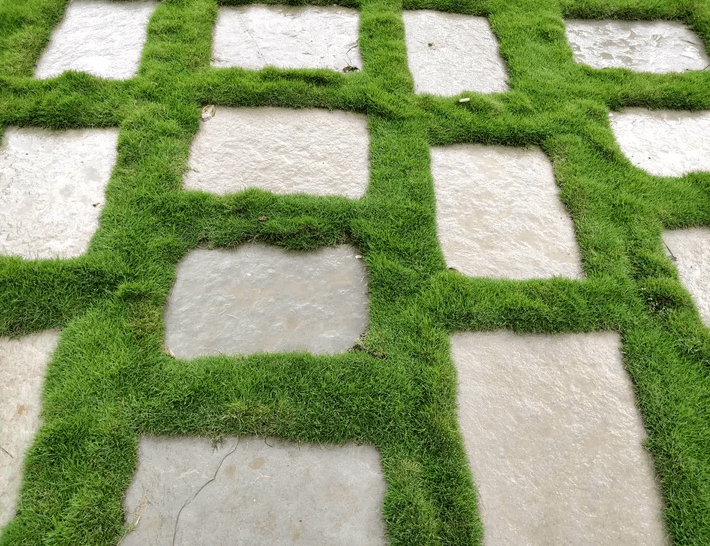
Preparing the soil: pH levels, fertilization, and soil amendments.
When preparing the soil for planting Irish Moss, it is important to consider the pH levels, fertilization, and soil amendments. Irish Moss prefers slightly acidic soil with a pH level of around 5.5 to 6.5. You can test the pH level of your soil using a simple soil testing kit and adjust it as needed with additives such as sulfur or lime. Additionally, fertilization is important for the growth and health of Irish Moss. You can use a balanced, slow-release fertilizer to provide essential nutrients to the soil. Soil amendments such as organic matter or compost can also be beneficial for improving soil structure and fertility. By properly preparing the soil with the right pH levels, fertilization, and soil amendments, you can create an optimal environment for Irish Moss to thrive and contribute to the beauty and biodiversity of your outdoor space.
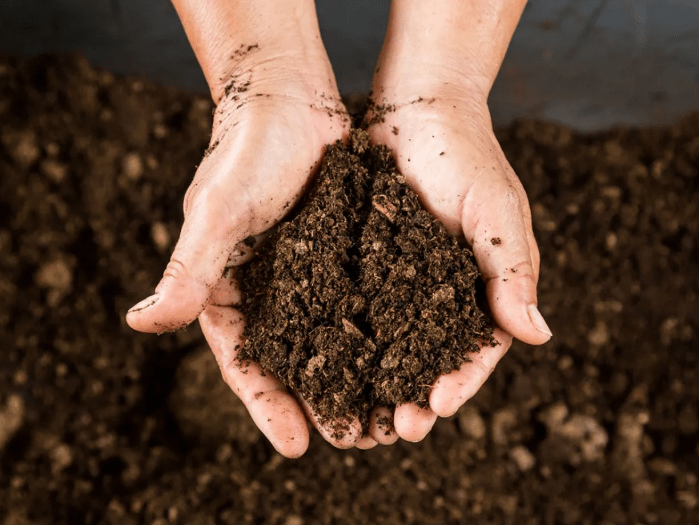
Step-by-step planting guide: spacing, depth, and techniques.
When planting Irish Moss, it is important to follow a step-by-step guide to ensure successful growth. First, consider the spacing between each plant. Irish Moss should be planted about 6-12 inches apart to allow for spreading and growth.
Next, consider the depth at which to plant the Irish Moss. The plants should be placed in the soil at a depth of around 2-3 inches to provide them with the proper support and stability.
When it comes to planting techniques, make sure to gently spread out the roots of the Irish Moss before placing them in the soil. This will help the roots to establish themselves and promote healthy growth.
By following these steps and providing the proper care, you can ensure that your Irish Moss plants will thrive and contribute to the beauty of your outdoor space.
Best times of year to plant Irish moss.
The best time to plant Irish moss is in the early spring or early fall. These times of year provide the ideal growing conditions for Irish moss, allowing the plants to establish themselves before the extreme heat of the summer or freezing temperatures of the winter. It is important to plant Irish moss in well-draining soil and in an area that receives partial to full shade. This will help the plants thrive and prevent them from drying out or becoming scorched by the sun. Additionally, be sure to water the Irish moss regularly, especially during dry periods, to keep the soil consistently moist. With the right timing and care, your Irish moss will grow and spread, creating a beautiful and lush ground cover in your garden.
Caring for Irish Moss Ground Cover
Watering requirements and techniques.
Irish moss is a low-maintenance ground cover plant, but it does have specific watering requirements. It is important to water Irish moss regularly, especially during dry periods, to keep the soil consistently moist. However, it is also important to avoid overwatering, as this can lead to root rot and other issues. One technique for watering Irish moss is to use a soaker hose or drip irrigation system to deliver water directly to the roots, rather than watering from above, which can lead to the foliage becoming waterlogged. Another technique is to water early in the morning to allow the foliage to dry before nightfall, which can help prevent disease. By following these watering requirements and techniques, you can help your Irish moss thrive and create a beautiful ground cover in your garden.
Fertilization schedules and recommended products.
Irish moss ground cover plants require regular fertilization to thrive and maintain their lush, green appearance. It is recommended to fertilize Irish moss in the spring with a balanced, slow-release fertilizer. This will provide the necessary nutrients for the plant to grow and spread. It is important not to over-fertilize, as this can lead to excessive growth and an increased susceptibility to disease.
When selecting a fertilizer for Irish moss, it is best to choose a product that is specifically formulated for use on ground cover plants. Look for a fertilizer with a balanced N-P-K ratio, such as a 10-10-10 or 20-20-20 blend. This will ensure that the Irish moss receives the proper amounts of nitrogen, phosphorus, and potassium, which are essential for healthy growth.
As for the fertilization schedule, it is best to apply the fertilizer in the early spring, as the plant is emerging from its dormant phase. This will give the Irish moss the necessary nutrients to support new growth. It is also beneficial to apply a second round of fertilizer in the late summer or early fall to help the plant maintain its vigor through the end of the growing season.
Overall, by following a consistent fertilization schedule and using recommended products, you can ensure that your Irish moss ground cover remains healthy and vibrant in your garden.
Weed control and pest management.
Weed control and pest management are crucial for maintaining a healthy garden. There are many methods for controlling weeds, including hand-pulling, mulching, and using herbicides. It’s important to stay on top of weed control to prevent them from taking over your garden and competing with your plants for nutrients. When it comes to pest management, there are natural and chemical options to consider. Beneficial insects, such as ladybugs and lacewings, can help control pests by feeding on them. Additionally, using organic pest control products can help minimize the impact on the environment while keeping your garden free from harmful pests. Overall, it’s important to stay proactive with your weed control and pest management efforts to ensure a thriving and healthy garden.
Pruning and trimming practices.
Pruning and trimming are essential practices for maintaining the health and appearance of your plants and trees. Pruning helps to remove dead or diseased branches, improve air circulation, and promote new growth. It’s important to use sharp, clean tools and make precise cuts to minimize damage to the plant. Trimming, on the other hand, involves cutting back overgrown or unruly branches to maintain the shape and size of the plant. Regular pruning and trimming can also help prevent the spread of diseases and ensure that your plants and trees remain healthy and vibrant. It’s important to research the specific pruning and trimming needs of each plant species to ensure that you are providing the best care for your garden. Overall, incorporating these practices into your gardening routine can help promote the overall health and appearance of your plants and trees.
Common Problems and Solutions
Identifying and treating common pests and diseases.
Identifying and treating common pests and diseases is an important part of maintaining a healthy garden. One common pest to look out for is aphids, which can be identified by the small, soft-bodied insects gathering on the stems and leaves of plants. To treat aphids, you can use insecticidal soap or neem oil as a natural alternative. Another common issue is powdery mildew, which presents as a white, powdery substance on the leaves of plants. To treat powdery mildew, you can use a fungicide or a homemade solution of water and baking soda. Additionally, it’s important to regularly inspect your plants for signs of pests and diseases and take appropriate action to prevent their spread. Proper watering, fertilization, and maintaining a clean, well-ventilated garden can also help prevent and mitigate pest and disease issues. By staying informed and proactive, you can effectively identify and treat common pests and diseases to keep your garden thriving.
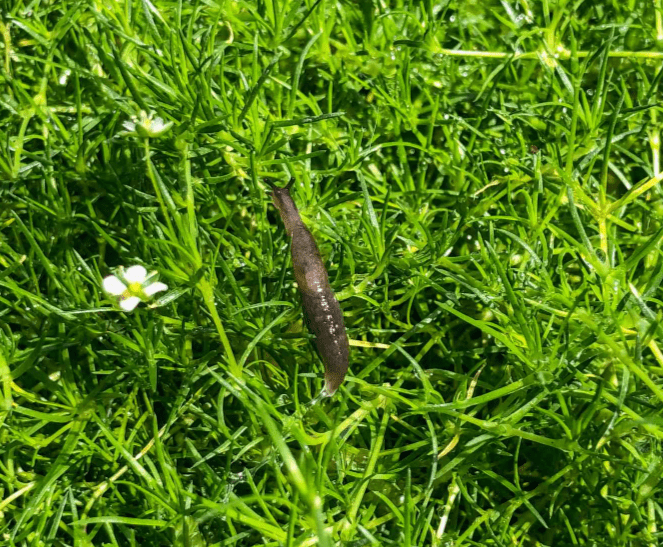
Addressing growth issues and bald spots.
Gardening can be a rewarding and enjoyable hobby, but it also comes with its fair share of challenges, such as addressing growth issues and bald spots in your garden. One common issue to look out for is aphids, which are small, soft-bodied insects that tend to gather on the stems and leaves of plants. These pests can be treated with insecticidal soap or neem oil as a natural alternative. Another common issue is powdery mildew, which presents as a white, powdery substance on the leaves of plants. To treat powdery mildew, you can use a fungicide or a homemade solution of water and baking soda. It’s important to regularly inspect your plants for signs of pests and diseases and take appropriate action to prevent their spread. Proper watering, fertilization, and maintaining a clean, well-ventilated garden can also help prevent and mitigate pest and disease issues. By staying informed and proactive, you can effectively identify and treat common pests and diseases to keep your garden thriving.
Troubleshooting yellowing or browning moss.
Yellowing or browning moss can be a sign of a few different issues that may be affecting the health of your garden. One common issue to look out for is aphids, which are small, soft-bodied insects that tend to gather on the stems and leaves of plants. These pests can suck the sap from the plant, causing discoloration and damage. They can be treated with insecticidal soap or neem oil as a natural alternative. Another common issue is powdery mildew, which presents as a white, powdery substance on the leaves of plants. This fungal disease can cause the moss to yellow and deteriorate. To treat powdery mildew, you can use a fungicide or a homemade solution of water and baking soda. It’s important to regularly inspect your plants for signs of pests and diseases and take appropriate action to prevent their spread. Proper watering, fertilization, and maintaining a clean, well-ventilated garden can also help prevent and mitigate pest and disease issues. By staying informed and proactive, you can effectively identify and treat common pests and diseases to keep your garden thriving.
Landscaping Ideas with Irish Moss Ground Cover
Creative design ideas for using Irish moss in gardens.
Irish moss is a versatile and attractive ground cover that can be used in a variety of creative landscaping designs. It is often used to create lush, green areas in gardens, and it can also be used as a filler between stepping stones or in rock gardens. Irish moss is known for its low-growing, dense foliage and its ability to thrive in partial shade. When designing with Irish moss, consider using it as a border around flower beds or as a backdrop for other plants in a garden. It can also be used to create interesting patterns or designs in a garden, adding visual interest and texture. Additionally, Irish moss can be used to cover and beautify unsightly areas such as bare patches of soil or rocky areas. With its ability to tolerate foot traffic, it can even be used to create a unique and soft pathway in a garden. Overall, Irish moss is a versatile and beautiful option for creative garden design.
Combining Irish moss with other plants and ground covers.
Irish moss is a versatile plant that can be combined with other plants and ground covers to create lush, green areas in gardens. It is often used as a filler between stepping stones or in rock gardens, adding a soft and natural look to the landscape. When designing with Irish moss, it can be used as a border around flower beds, as a backdrop for other plants, or to create interesting patterns and designs in a garden. Its low-growing, dense foliage adds visual interest and texture to the garden, making it a popular choice for creative garden design. Additionally, Irish moss can be used to cover and beautify unsightly areas such as bare patches of soil or rocky areas. With its ability to tolerate foot traffic, it can even be used to create a unique and soft pathway in a garden. By combining Irish moss with other plants and ground covers, you can create a visually stunning and functional garden space.
In conclusion, growing and caring for Irish Moss ground cover is a relatively easy process that can add beauty and texture to your garden. By following the simple steps outlined in this article, you can ensure that your Irish Moss remains healthy and vibrant. Remember to provide proper sunlight, water, and soil conditions, and you’ll be able to enjoy the lush greenery of Irish Moss in your garden for years to come.
Frequently asked questions And Answer
Irish Moss is a low-growing, creeping perennial plant that is often used as a ground cover in gardens and landscapes.
You can plant Irish Moss by spreading the seeds or planting small divisions of the plant in well-draining soil. It is best to plant in the spring or fall.
Irish Moss thrives in full sun to partial shade, so it is important to provide it with at least 4-6 hours of sunlight per day.
Irish Moss prefers to be kept consistently moist, so it is important to water it regularly, especially during dry periods.
Regularly trimming and weeding around the Irish Moss will help to keep it healthy and looking neat. It is also important to provide it with proper drainage to prevent root rot.
Irish Moss is hardy and can tolerate cold temperatures, making it a great option for gardeners in cooler regions.
You can propagate Irish Moss by dividing the plant and replanting the divisions in a new area. This can help to spread the ground cover and fill in empty spaces in your garden.
